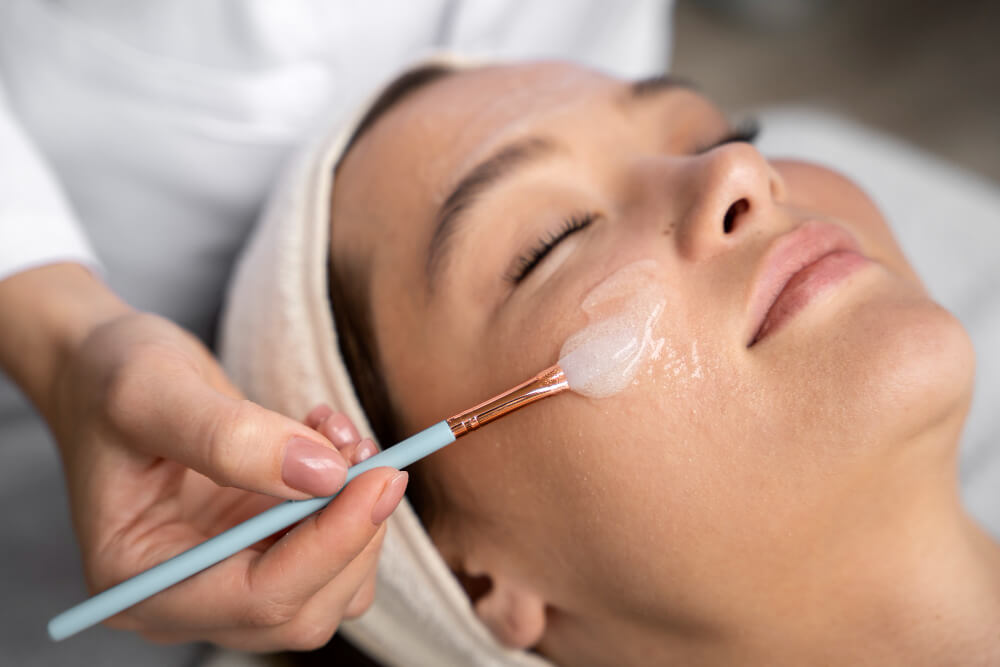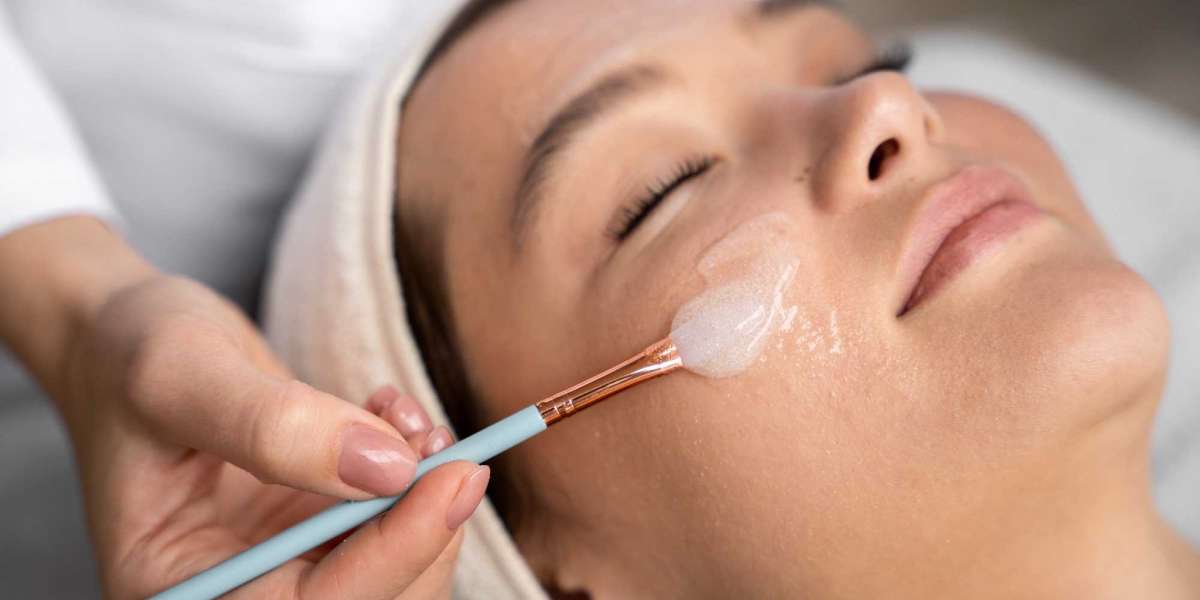Aesthetic Services: Everything You Need to Know About Chemical Peels
Chemical peels are a non-invasive aesthetic procedure that uses chemical solutions to exfoliate the top layers of the skin. This controlled injury stimulates the production of new collagen, resulting in smoother, more even-toned, and rejuvenated skin.

What Are Chemical Peels?
Chemical peels are cosmetic treatments that use a chemical solution to exfoliate the skin, removing dead skin cells and promoting the growth of new, healthier skin. The procedure is performed by applying a chemical solution to the skin, which causes it to blister and eventually peel off, revealing smoother and more youthful skin underneath.
How Do Chemical Peels Work?
Chemical peels work by breaking down the bonds between dead skin cells on the outer layer of the skin. Depending on the depth of the peel, they can target superficial, medium, or deep layers of the skin. The procedure stimulates collagen production and accelerates cell turnover, improving skin texture and tone.
Types of Chemical Peels
1. Superficial Peels
Superficial peels, also known as light peels, use mild acids like alpha hydroxy acids (AHAs) or beta hydroxy acids (BHAs). These peels are ideal for:
- Treating mild acne
- Improving uneven skin tone
- Reducing fine lines
2. Medium Peels
Medium peels typically use stronger acids, such as trichloroacetic acid (TCA). They penetrate deeper into the skin and are suitable for addressing:
- Moderate acne scars
- Hyperpigmentation
- Wrinkles and fine lines
3. Deep Peels
Deep peels utilize phenol or high concentrations of TCA to reach the deeper layers of the skin. These peels provide dramatic results but require longer recovery times. They are best for:
- Severe acne scars
- Deep wrinkles
- Extensive sun damage
Benefits of Chemical Peels
- Reduced Appearance of Fine Lines and Wrinkles:
- Stimulates collagen production, improving skin texture and reducing the appearance of fine lines and wrinkles.
- Improved Skin Tone and Texture:
- Reduces the appearance of age spots, sun damage, and hyperpigmentation.
- Improves skin texture and smoothness.
- Minimized Acne Scars:
- Can help to reduce the appearance of acne scars, including ice pick scars and rolling scars.
- Reduced Appearance of Enlarged Pores:
- Can help to minimize the appearance of enlarged pores.
- Increased Skin Radiance:
- Promotes cell turnover, revealing a brighter, more radiant complexion.
Who Is a Suitable Candidate for Chemical Peels?
Chemical peels are suitable for individuals with:
- Mild to severe acne
- Uneven skin tone or texture
- Signs of aging such as fine lines and wrinkles
- Pigmentation issues
However, individuals with active infections, skin diseases, or severe sensitivity should consult with a dermatologist before undergoing the procedure.
The Chemical Peel Procedure

- Consultation:
- A thorough consultation with a qualified dermatologist or aesthetician is crucial to determine if you are a suitable candidate for a chemical peel and to discuss your individual skin concerns and goals.
- Medical history and any existing skin conditions will be reviewed.
- Pre-Treatment Instructions:
- You may be advised to avoid certain medications or skincare products before the treatment.
- Sun protection is crucial before and after the peel.
- Treatment Application:
- The chosen chemical solution is carefully applied to the skin.
- You may experience a tingling or burning sensation during application.
- Post-Treatment Care:
- After the treatment, your skin may appear red and slightly irritated.
- Your dermatologist or aesthetician will provide post-treatment instructions, which may include:
- Applying soothing creams or ointments.
- Avoiding sun exposure.
- Using gentle cleansers and moisturizers.
Risks and Side Effects
Although chemical peels are generally safe, they do carry some risks and potential side effects:
- Redness and Irritation: Temporary redness and mild irritation are common after the procedure.
- Peeling and Flaking: The treated skin may peel or flake for several days.
- Hyperpigmentation or Hypopigmentation: In rare cases, uneven skin pigmentation may occur.
- Infection: Proper aftercare is essential to prevent infections.
Aftercare Tips for Chemical Peels
1. Protect Your Skin
Use a broad-spectrum sunscreen with SPF 30 or higher to shield your skin from harmful UV rays.
2. Avoid Picking
Do not pick or peel off the flaking skin, as it can lead to scarring.
3. Moisturize Regularly
Keep your skin hydrated with a gentle, non-comedogenic moisturizer.
4. Avoid Harsh Products
Refrain from using exfoliants, retinoids, or other harsh skincare products for at least a week post-treatment.
5. Follow Professional Advice
Adhere to the specific aftercare instructions provided by your dermatologist or aesthetician.
Conclusion
Chemical peels can be an effective way to improve the appearance of your skin and address various skin concerns. However, it is crucial to consult with a qualified professional to determine if this treatment is right for you and to discuss any potential risks and benefits. By following proper pre- and post-treatment care instructions and working closely with your provider, you can safely and effectively achieve the desired results.
Contact our Aesthetic services clinic for effective chemical peels (432) 314-2028 or visit us https://tscmidland.com/













